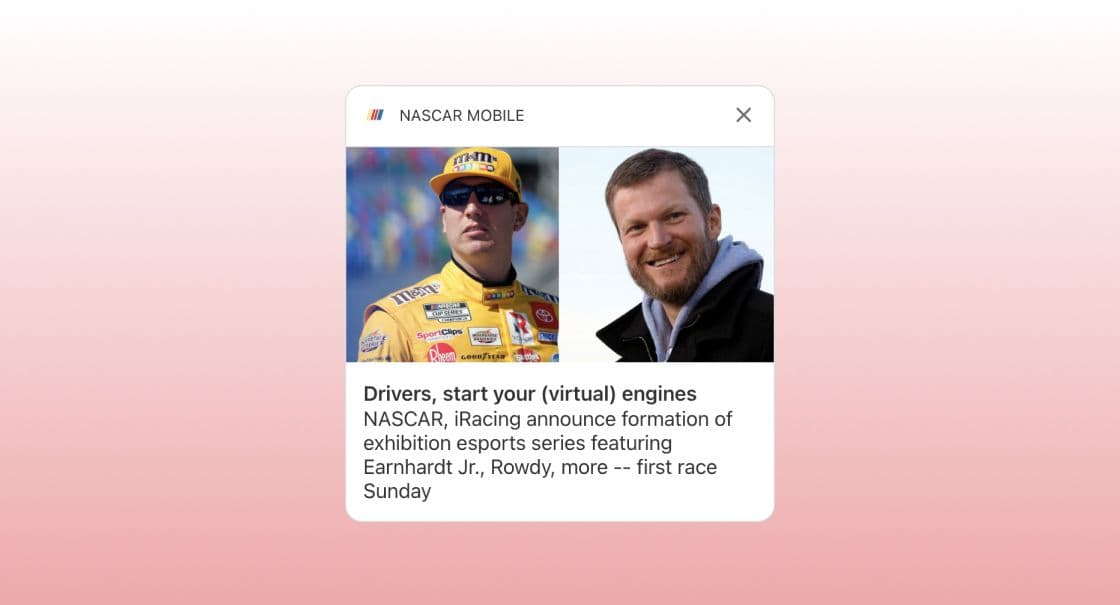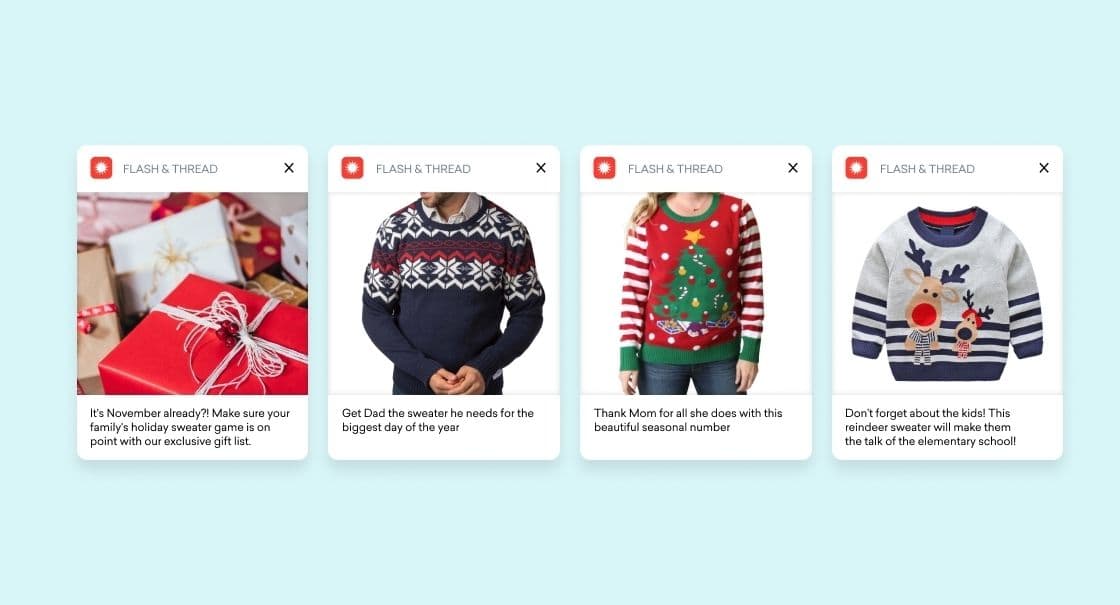What Rich Push Makes Possible for Retailers
Published on December 02, 2020/Last edited on December 02, 2020/5 min read


Adam Swiderski
WriterPush notifications, which originated as simple text-focused communications delivered to mobile phones, bloomed over the years into a powerful, flexible channel, capable of delivering interactive, multimedia-infused messages to multiple platforms. It’s not just about providing a flashier experience for the optics, either: Braze research indicates that adding rich content to messaging can raise conversion rates by 57%.
For the retail industry, this leveling up of push has transformed it into a tool that can serve as a flexible and versatile part of any cross-channel campaign. Working in tandem with channels like email and in-app messages (IAM), push can provide a right-on-time line to customers, and rich push means that message can be more robust and deliver tangible, measurable results that translate into sales.
In order to understand how, it’s necessary to first get a clearer picture of what rich push actually is, and why it matters.
Push Messaging Moves Beyond Plain Text
In the beginning (cue music), push consisted of plain text messages sent to customers who’d opted in to receive them, and that was pretty much it. Push notifications were a great way to deliver timely notices that encouraged customers to take action, but anything beyond that required the recipient to navigate to a brand’s web presence or mobile app. Rich push, pioneered on Android devices but boosted with the release of iOS 10 in the fall of 2016, opened new doors in terms of what kind of experience could be delivered via this tried-and-true channel.
What makes rich push more effective? It might be as simple as including imagery of a brand’s products, creating a more eye-catching push message that encourages engagement. It might include video, delivering a multimedia experience allowing for more nuanced messaging. It could even include animated GIFs, which might sound frivolous until you take into account that, as far back as 2016, nearly 13 billion GIFs were shared on Facebook Messenger, making this method of communication an important part of any modern brand’s marketing vocabulary. Finally, it can mean delivering a greater degree of interactivity, utilizing action buttons to allow customers to interact with a brand without having to jump to an app or web environment.
Rich Push in Practice
To see the full value of rich push, it’s smart to look at what actual brands are doing to leverage this channel in their marketing efforts. One great example? When the COVID-19 pandemic took hold in spring 2020, the National Association for Stock Car Auto Racing (NASCAR) needed to find ways to keep at-home fans engaged while their racing schedule was put on hold. So NASCAR created the iRacing Pro Invitational Series, with virtual cars raced on virtual tracks by real NASCAR drivers like Dale Earnhardt Jr. and Kyle Busch and leveraged Braze to spread the word about the virtual competitions, using Braze rich push notifications to drive traffic to the NASCAR app.

By delivering attention-getting push notifications that attracted users with images, NASCAR successfully reached racing fans who were encouraged to stick with a new form of the sport. These rich push campaigns saw an Android open rate of 9% and an iOS open rate of 4%, significantly outpacing industry standards, and led to a conversion rate of 40%, driving stronger engagement across the board.
Making Rich Push Work for Retail
The benefits of rich push can be leveraged by any industry. For retail brands, this powerful functionality can be the perfect way to grab customers’ attention to drive purchases or other key actions. That could mean leveraging image-rich push messaging to onboarding customers, highlight deals, or showcase personalized product recommendations in memorable, highly-visual ways.

It’s the potential for interactivity, however, where rich push truly shines. A key example of this functionality was offered up by ride-sharing app Uber, which utilized rich push to allow customers to track their rides, crafting messaging that served as both marketing and product experience in one fell swoop. With the boundaries in terms of what actions push can deliver still being explored, there remain enticing possibilities for further blurring the line between outreach and full product engagement.
Final Thoughts: New Frontiers in Rich Push Messaging
Of course, while rich messaging has taught the old dog (push) some new tricks, it still comes with some of the limitations that have always defined the channel, such as the need for users to opt in. Still, with customers interacting with brands in all sorts of new ways—from wearables to virtual home assistants to platforms like Apple TV—the potential for push to connect and engage customers is only continuing to grow.
That being the case, it’s increasingly important for marketers to understand how to individually tailor the messages they send to concoct a potent push outreach that’s more likely to make customers feel seen and heard. For more on how to do that, check out the Braze Personalization Guide, and power up your rich push strategy.
Be Absolutely Engaging.™
Sign up for regular updates from Braze.
Related Content
View the Blog
The new inbox reality: How iOS changes are reshaping email marketing

Aparna Prasad

Experience optimization: Turning data insights into better journeys

Team Braze

December 2025 Bonfire Marketer of the Month: Jagex’s Emma Oliver
